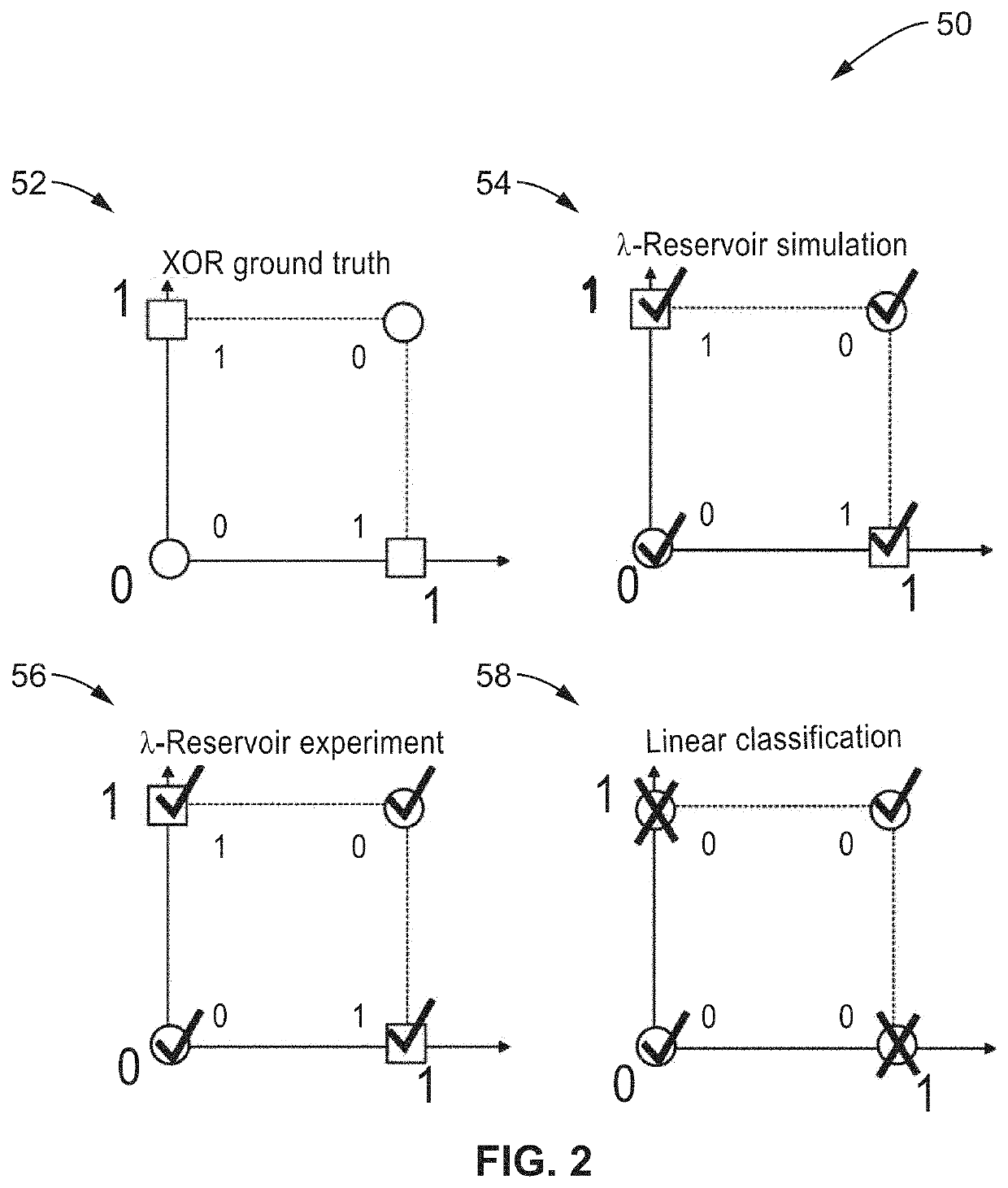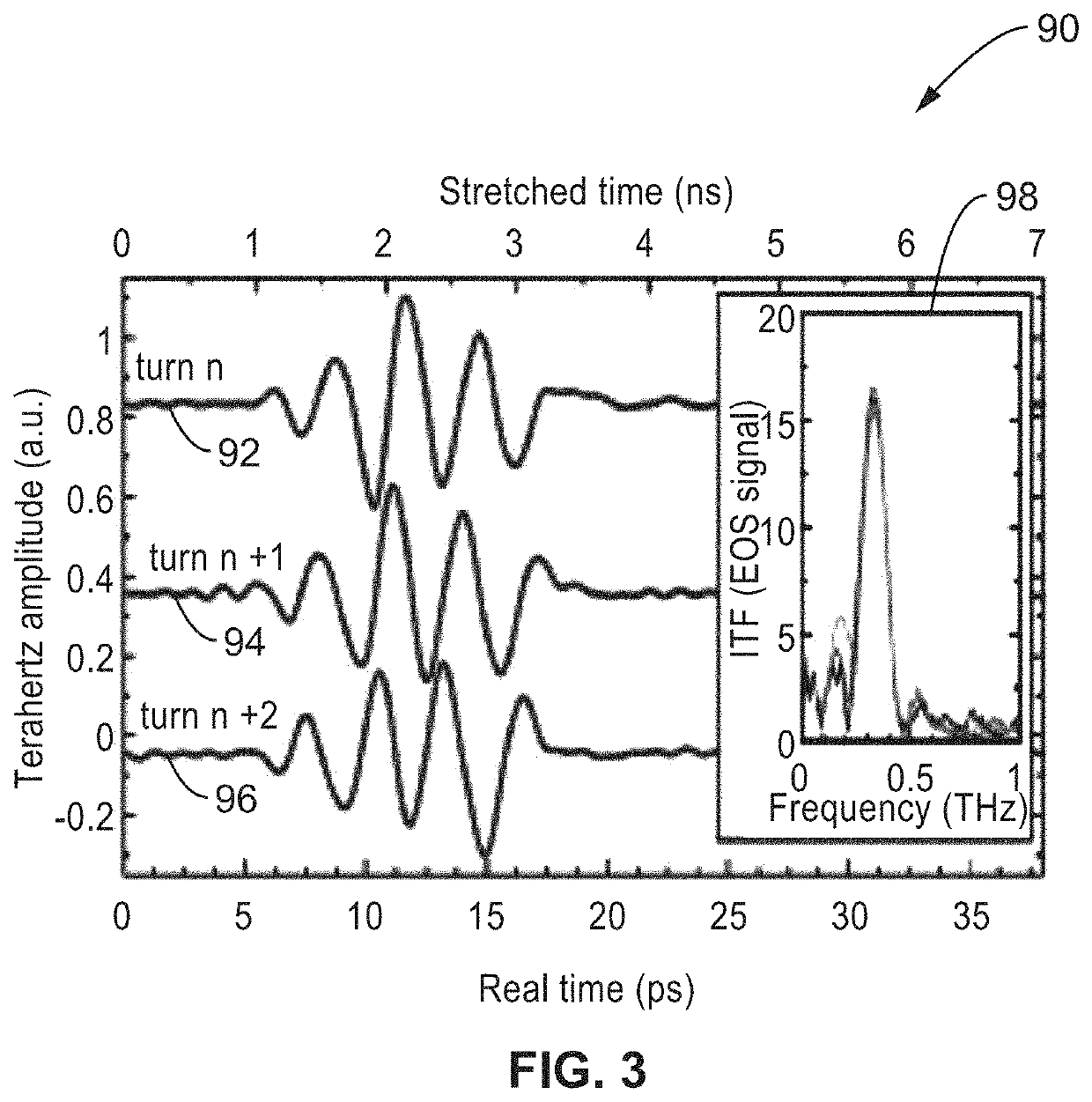Lambda-reservoir computing
a technology of reserve computing and reservoir computing, applied in the field of reserve computing artificial intelligence systems, can solve problems such as the inability to deal with shifts in the distribution of input and output data, and achieve the effects of reducing the number of hardware components, and reducing the number of computational tasks
- Summary
- Abstract
- Description
- Claims
- Application Information
AI Technical Summary
Benefits of technology
Problems solved by technology
Method used
Image
Examples
Embodiment Construction
1. Lambda-Reservoir Computing Embodiments
[0023]FIG. 1 illustrates an example embodiment 10 of a Spectral Reservoir Computer referred to herein as a Lambda-Reservoir Computer. It should be appreciated that Reservoir Computing is a computing paradigm that utilizes a nonlinear recurrent dynamical system to carry out information processing. The system performs nonlinear classification without the need of physical feedback. It accesses millions of wavelength nodes in a single physical node resulting in dramatic hardware reduction.
[0024]A supercontinuum source 12 generates a supercontinuum output 14 plotted with respect to wavelength (λ) 15a and time (t) 15b domains. In at least one embodiment the supercontinuum creates pulses with pulse widths on the order from 10 fs to 100 fs, thus having a bandwidth in the 100's of THz range and millions of Lambda nodes. Input data 16 is received by spectral modulator 18 which modulates data 16 onto the supercontinuum spectrum 14 to generate a modulate...
PUM
 Login to View More
Login to View More Abstract
Description
Claims
Application Information
 Login to View More
Login to View More - R&D
- Intellectual Property
- Life Sciences
- Materials
- Tech Scout
- Unparalleled Data Quality
- Higher Quality Content
- 60% Fewer Hallucinations
Browse by: Latest US Patents, China's latest patents, Technical Efficacy Thesaurus, Application Domain, Technology Topic, Popular Technical Reports.
© 2025 PatSnap. All rights reserved.Legal|Privacy policy|Modern Slavery Act Transparency Statement|Sitemap|About US| Contact US: help@patsnap.com



